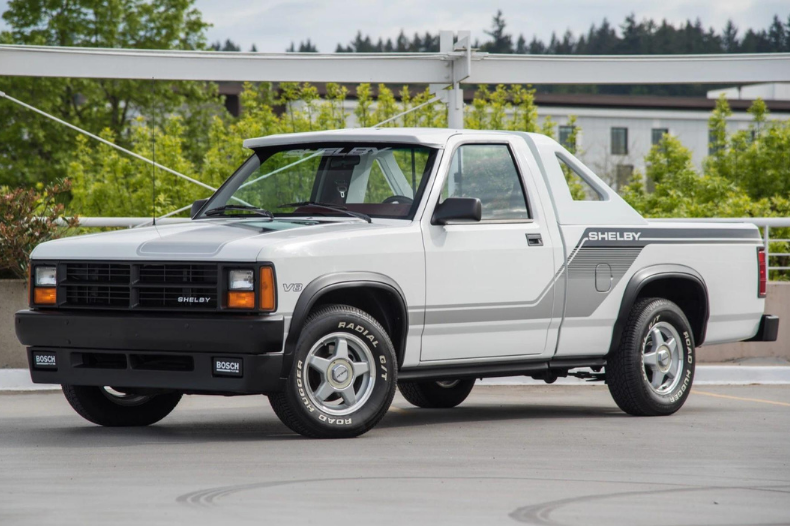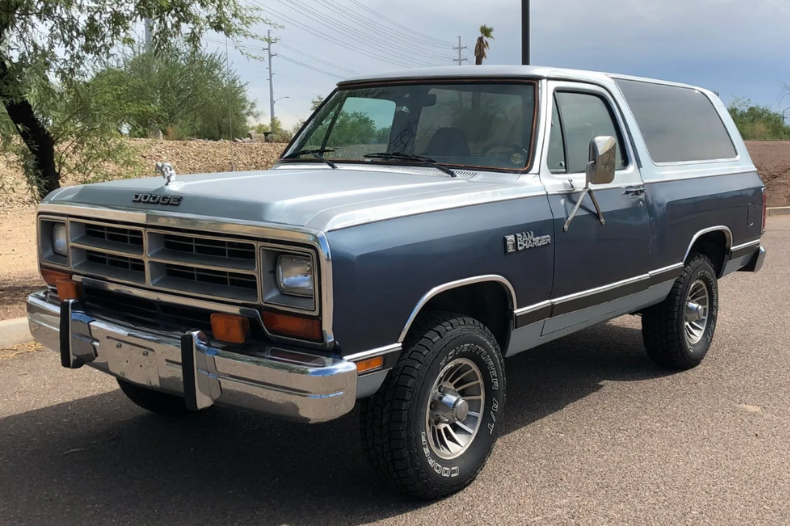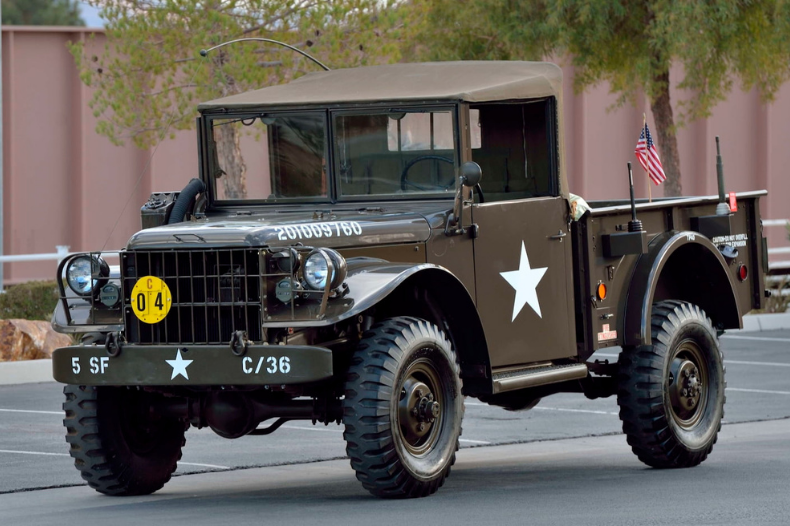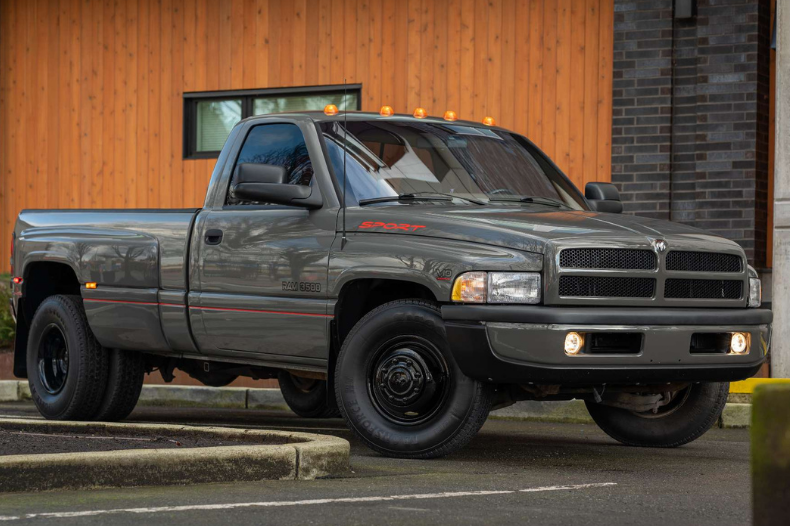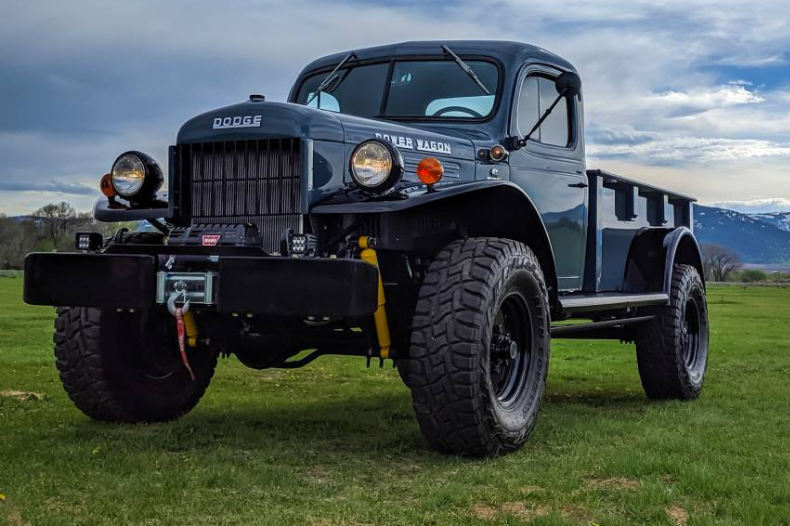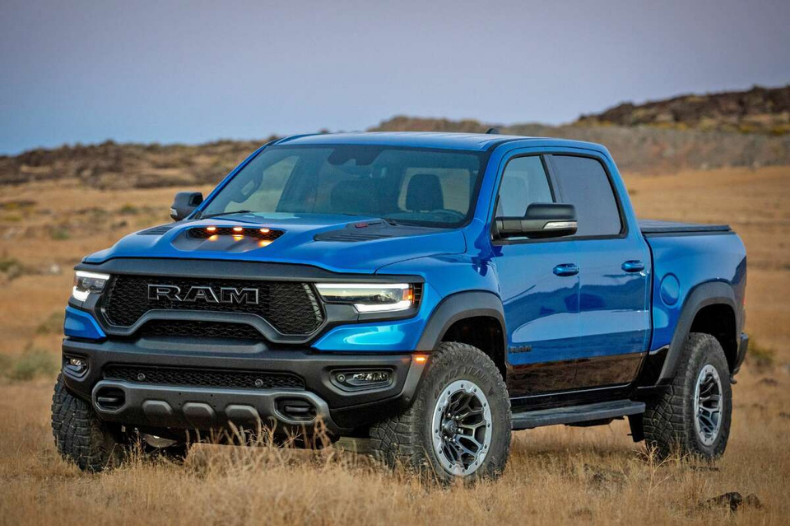When Horace Elgin Dodge and John Francis Dodge started producing automobiles under the Dodge Brothers moniker in 1914, they were met with fast success thanks to astute automotive business dealings and a reputation for reliable trucks and touring vehicles.
Unfortunately, both brothers passed away just a few short years later in 1920 and, while Dodge Brothers remained a primary U.S. military supplier after World War I, automotive sales took a major hit, sinking all the way from third in domestic sales to thirteenth.
In 1928, Chrysler obtained Dodge Brothers and rejuvenated the brand through a streamlined model line consisting of sedans and commercial trucks. Under Chrysler, Dodge climbed back up the ranks, in large part due to its continued reputation of dependability for the U.S. military during World War II, during which Dodge produced approximately 400,000 WC-Series light 4x4 trucks and medium-duty 6x6 trucks. The WC-Series would retire in 1950 and be replaced by the Dodge M37 for 1951.
With civilian automotive production resuming in late 1945, Dodge reintroduced a largely unchanged military truck based on the WC-Series for everyday purpose: the Power Wagon.
4x4 Pickup Truck Legacy.
While Dodge had been producing light-duty commercial trucks since the 1910s, the Power Wagon was the first medium-duty truck available to mass markets. The Power Wagon was produced all the way through 1980, when it would be supplanted by the Dodge Ram.
For the 1948 model year, Dodge released B-Series: a new postwar light-duty truck. The B-Series was succeeded by the C-Series, which ran from 1945 - 1960. The C-Series was replaced by the D/W-Series from 1960-1993 - the "D" designating two-wheel drive, and the "W" designating four-wheel drive.
The D/W-Series platform also spurned the Dodge Ramcharger, Dodge's response to the emerging class of affordable and rugged off-road-ready 4-wheel drive sport utility vehicles like the Ford Bronco, the Toyota FJ, Jeep CJ, and later the Chevrolet Blazer. When the Ramcharger ceased availability in the U.S. in 1993, Dodge effectively exited the mid-size SUV market until bringing forth the Durango for the 1998 model year.
THE RISE OF THE RAM.
For the 1981 model year, Dodge introduced the now-legendary Ram name for trucks and pickups in conjunction with the D/W naming convention: "D" / "Ram" designated two-wheel drive, and "W" / "Power Ram" designated four-wheel drive. The Power Ram also marked the end of the Power Wagon line.
When the next generation of Dodge trucks was offered for the 1994 model year, Dodge formally dropped the letter naming convention. The all-new Dodge Ram was an instant success, earning "Truck of the Year" accolades and more than doubling sales compared to 1993.
Dodge doubled-down on the success and focus of their trucks in 2009 by formally splitting the truck and passenger car lines - Dodge focusing on sedans and coupes like the Challenger, Durango, and Charger, while the all-new RAM took on the legacy of selling one of America's most popular and powerful line of trucks.
Today, the RAM competes head-to-head against the likes of the Chevy, Ford, Nissan, and Toyota on medium and heavy-duty trucks. Plus, the beastly RAM 1500 TRX offers unparalleled power by way of a supercharged 6.2L HEMI V8 and a serious battery of off-road upgrades.

